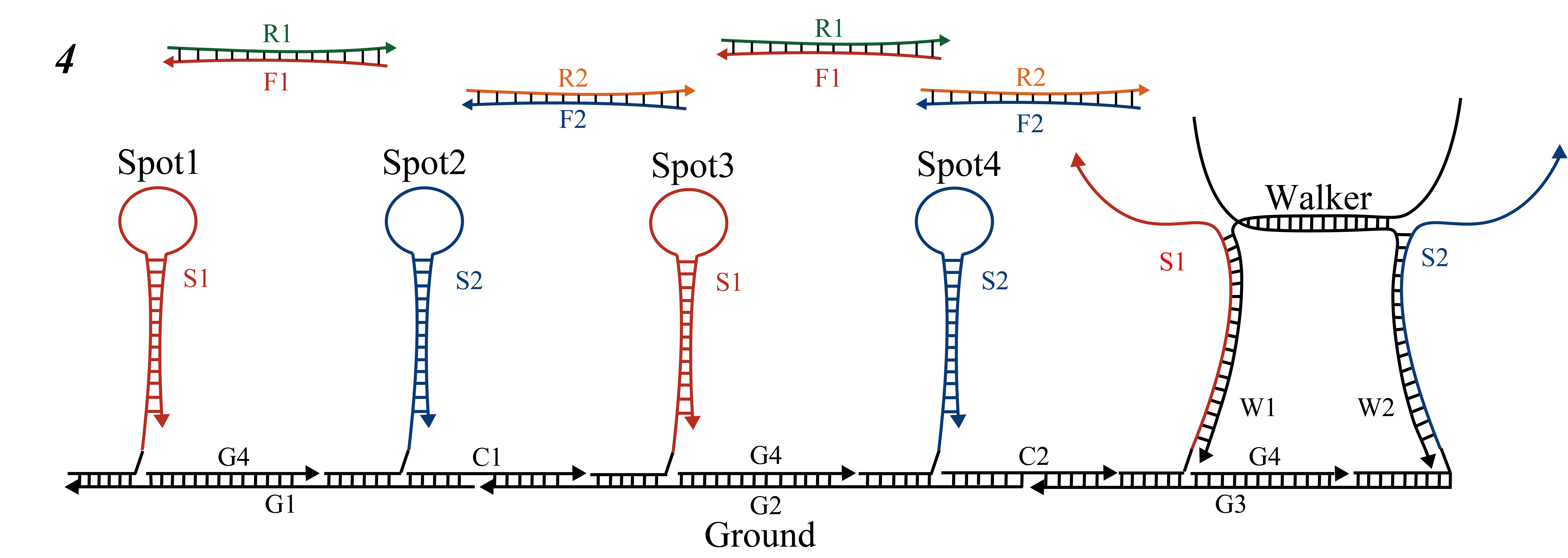We satisfied the specification going in one direction; however, specifications to return in the opposite direction are also necessary when considering practicality. To explain the principle of operation going back in the opposite direction, suppose a situation in which the DNA Walker had progressed from left to right and needed to return from right to left, but Spot and Fuel formed a duplex, making it impossible to combine the foot and Spot of DNA Walker. Therefore, in order to separate the double-stranded bond between Spot and Fuel, R1 and R2 of single-stranded DNA were added (Figure 1).

R1 and R2 were designed to bind the single-stranded regions of F1 and F2, which were bare before the double-stranded DNA of Spot and Fuel (Figure 2).

Therefore, when R1 and R2 were added, a strand displacement reaction originating from the single-stranded region of F1 and F2 occurred and became waste of R1-F1 or R2-F2 (Figure 3). Spot was a single chain having a hairpin structure that returned to the DNA (Figure 4). Subsequently, as shown in the flow diagram of the design, adding Fuel will progress the reaction with Spot one foot at a time. However, in this case, F1 and F2 were single-stranded DNA designed such that the reaction proceeded from the right foot (W1). The Ground returned to its state before reacting with DNA Walker and then progressed to the original position. With the movement of DNA Walker above, it would be possible to slide the box.




